The soothing cascade of tinkling water accompanied by the regular chorus of native birdsong creates an irresistible soundtrack in Westland. And it routinely enriched my winter weekend escape to the woolly and wild reaches of the South Island’s West Coast. Hemmed in by the Tasman Sea and the serrated peaks of the Main Divide, the remote frontier feel of the region amplifies its mystique.
After soaking up the scenic medley of undulating landscapes on the TranzAlpine from Christchurch, I swapped the rails for the road. Hiring a Thrifty rental car from the train station, to dip into the West Coast’s free-roaming delights, pit-stopping at will is liberating. Just out of town, first stop was Shanty Town, a faithfully re-created 1860s gold-mining town, complete with pub and post office.
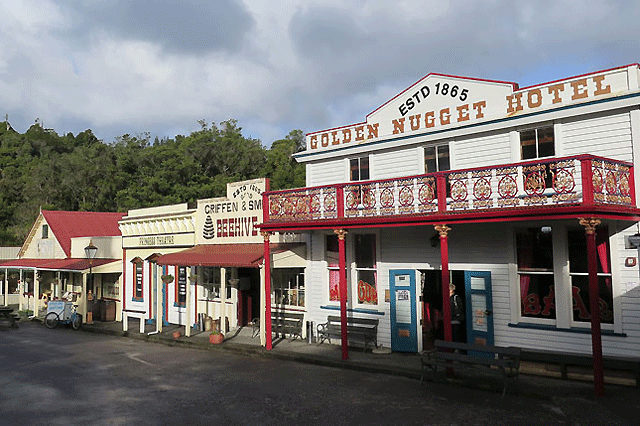
There are lots of interactive experiences to try your hand at, including gold-panning, sawmilling and the far more leisurely pursuit of the miniature train rides. This tailor-made tourist attraction is a perennial crowd-pleaser with families. Highlights include the cluster of 30 gold rush era buildings, painted in the bright colours of boiled sweets. Enjoy a tipple in the evocative Golden Nugget Hotel, learn the art of gold panning and enjoy the short movie in the opulent Victorian-themed theatre, where holographic technology illuminates the extreme stories of hardship and danger during the gold boom.
But the prize draw are the steam train rides following an original bush tram-line through native rainforest, replete with vestiges of the goldmining era. Don’t miss the Steam Shed where you can enjoy a hands-on inspection of three very rare steam locomotives, beautifully preserved and dating back to 1875. Heading further south on SH6, I went as far as Ross, a cute-as-a-button settlement, with a storied past in gold-mining. The historic village of glories lost sports a cluster of colonial buildings, including the old Ross jail and miners’ cottages.
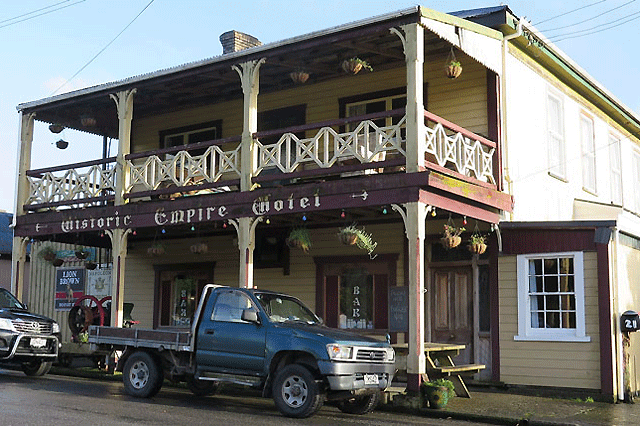
The 150-year old Empire Hotel (the current building dates from 1908) is one of the most treasured on the Coast, bursting with history, personality and great pub cuisine. Whitebait, anyone? Head into the Miners’ Cottage Museum, circa 1885, to glimpse a replica of “Honourable Roddy.” In 1909 the gold village achieved glory by unearthing the nation’s largest gold nugget, weighing in at 2.81kg.
There’s more gold panning opportunities here, sublime views across to the Totara River, and a variety of heritage trails, including the Water Race Walkway. And don’t miss the rustic fence festooned in car rego plates. From Ross, I ventured back up SH6, to take in a recent addition to Westland’s stable of top-billing attractions.
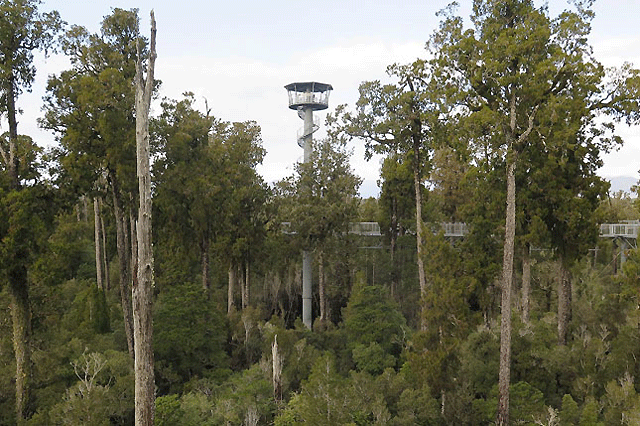
Turning off the highway on to the Woodstock-Rimu Rd, the $7 million Treetops walk is a series of elevated steel walkways allowing you to traverse the canopy of the podocarp forest by Lake Mahinapua. 25 metres above the forest floor, the mesh-steel gantry leads you through a dense vista of native forest, with giant specimens of rimu, kamahi and matai, interspersed with tree ferns, orchids, liverworts and fellow forest floor residents.
The flitting and trilling of feathery flocks is an added thrill; I spied bellbirds, tui, silver eyes and the unmistakable whoosh of a kereru, while weaving my way around the tall timber. Lush and intimate, the highpoint is the 47metre high spiral staircase leading you up to lofty views of the forest, Lake Mahinapua and the mountains of Westland. www.treetopsnz.com
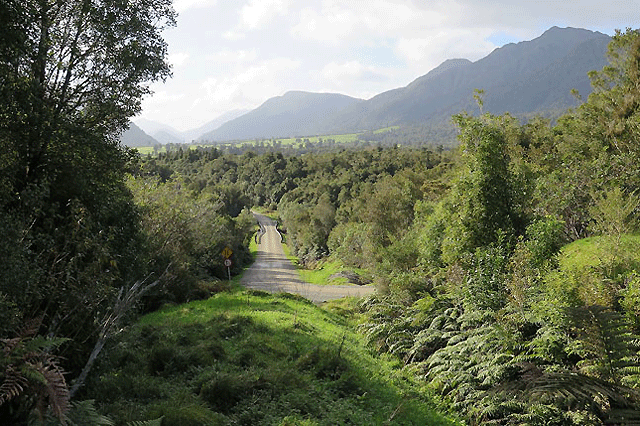
The lovely Treetops staff, who will equip you with a brolly if it’s wet, advised me their most frequently asked question is how to get to Hokitika Gorge from here. And if you have the time, Treetops is the perfect starting point for a grand circuit of the Hokitika Valley, lacing a slew of striking spectacles into one great hinterland drive.
From Treetops, head to the ghost-towns of Rimu and Woodstock, two pint-sized vestiges of the goldmining legacy, with a spectacular lookout over the Hokitika River and panels illustrating one of the Coast’s last great gold rushes. Follow the signposts to Kokatahi and Kowhitirangi. The West Coast’s multitude of vivid greens comes into sharp focus as you wend your way through the fertile farmland.
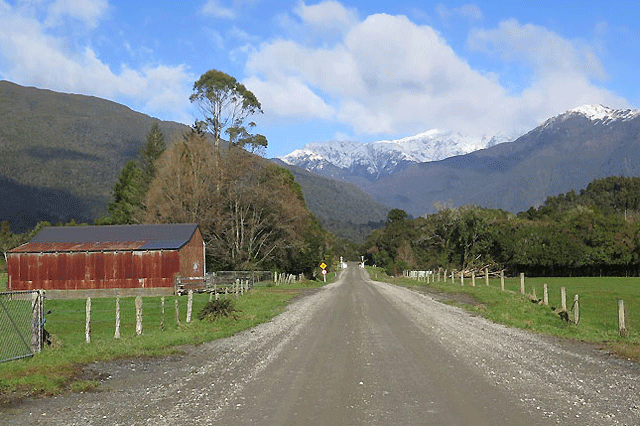
At Kowhitirangi, stop by the roadside monument, a stone gun shaft, meticulously lined up with the farmstead where four Hokitika cops were slain by Stanley Graham in 1941. From here, a short gravel road leads you to one of my favourite New Zealand settings, the ravishing granite ravine of Hokitika Gorge. Sometimes you’ll see a photo of brochure perfection of a scenic spot and you think, yeah right, I better it doesn’t look that good in the flesh. (Photo below by Petr Hlavacek.)
But Hokitika Gorge is one of the rare exceptions where the setting is as dreamy as reality gets, deep in the Whitcombe Valley. Right by the Alpine Fault, surrounded by dense native bush, thronging with native birds, the turquoise water is so absurdly vivid and otherworldly, it looks photo-shopped. (It’s due to the glacial flour seeping into the water.)
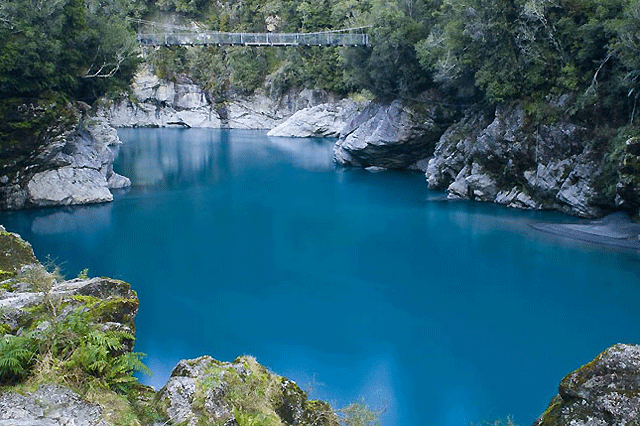
But after heavy rain, the water turns a soupy grey, so you will be at the mercy of the weather gods. Either way, cross the swing bridge and take in the enchanting bush walks, adjacent to the gorge. After you’ve had your fill of turquoise glory, complete your valley circuit by following the sign posts around the eastern side of Lake Kaniere, taking in the lusty waterworks of Dorothy Falls.
If it’s been raining heavily, the upside to nature’s vagaries is that the falls will be gushing like a fire hydrant. Directly adjacent to the road, it’s the easiest, shortest of walks to waterfall wonder. From there, a plethora of lakeside spots beckoning you to pause, before completing the circuit in Hokitika.
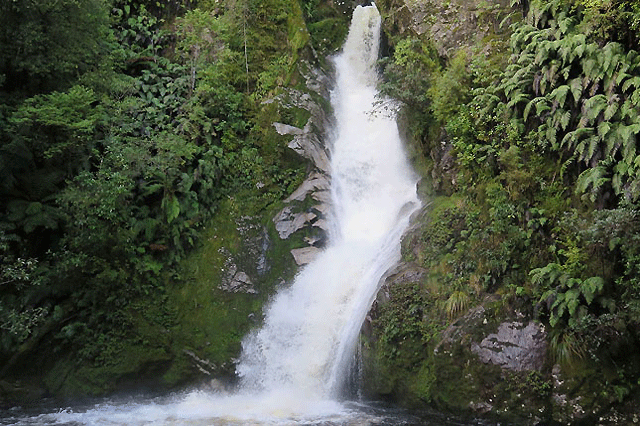
You’d be hard pressed to find any other town or city in New Zealand with more galleries, studios and arty types. Within this creative powerhouse, you could spend all day wandering the wide streets of Hokitika, admiring the studios, talking to the painters, glass blowers, craftspeople and pounamu carvers.
The only thing I would caution about is make sure you are buying the real McCoy. Some shops sell cheaper jade from Siberia and Australia, which pales in comparison to our greenstone. So the Ngai Tahu mark of authenticity is the symbol to look out for. Te Waipounamu Jade is scrupulously the real deal and stupendously crafted into sensual designs. Scattered across windswept, wave-lashed Hokitika Beach, the sculptural driftwood art is ever-evolving. Unleash your own creative juices and assemble something, while you’re there.
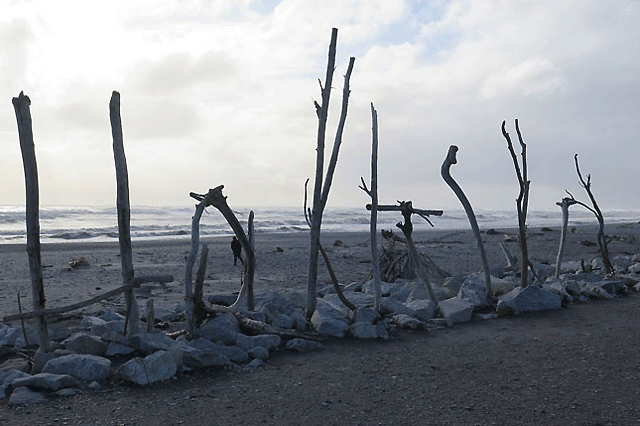
Pop into Sock World, it’s one of those quirky retail experiences unique to the West Coast. It’s home to the Sock Machine Museum and manufactures circular sock machines and fantastic merino/possum blend yarns, under the redoubtable command of Jacquie Grant. I’d also recommend the Wilderness Gallery.
It’s the sort of shop you walk into – and just want to buy everything. The photography and handcrafted giftware is sublime. And if you’ve ever seen those iconic West Coast stone mats, fashioned as door mats or table mats, Waters Edge headquarters is just out of town, on the Kumara Junction Highway. They make for a trusty, totally usable memento.
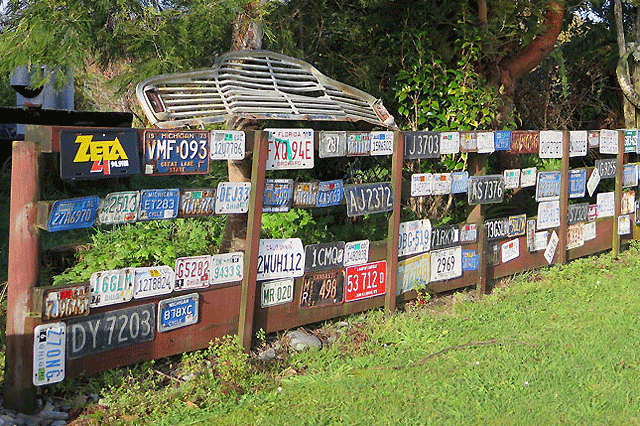
For a legendary West Coast hospitality experience truly out of the box, you must stay a night at the resplendently restored Theatre Royal Hotel in Kumara. Handily located half way between Greymouth and Hokitika, this grand old hotel first opened its doors in in 1876, at the start of the Kumara gold rush. It soon became the social nerve centre for miners who from across the globe.
A theatre was added for travelling shows who would come from England and America to perform. Even Richard John Seddon was known to take to the stage and sing. The current owners Kerrie and Mark Fitzgibbon bought the hotel in 2010. It was derelict, vandalised and in dire need of a major renovation. Nearly three years were devoted to restoring the property and refurbishing it with the extraordinary sense of splendour you can revel in today.
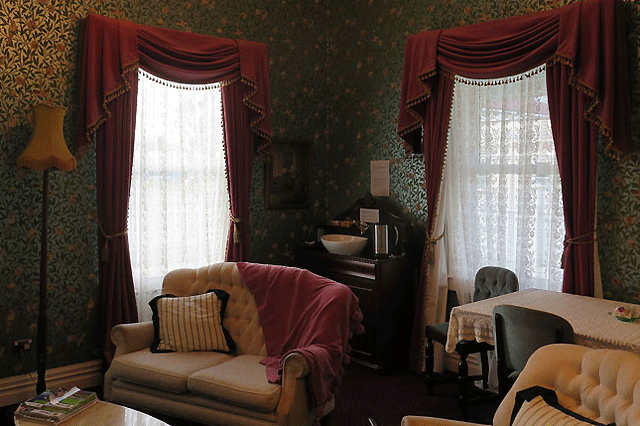
No expense was spared on the project, which also salvaged precious rimu and repurposed it in the bench and table tops throughout the property. Within the hotel, there are six artfully themed rooms, styled in honour of local characters, blending timeless elegance and vintage pieces with all the expected mod-cons. Shown around by the duty manager Vanessa, she delighted in pointing out the Barbara Weldon Room.
During the restoration, workers discovered sawdust in the wall linings, a primitive form of sound-proofing. Dancing girls were employed to “dance” with the miners – although this room took it to a horizontal level. In addition to the hotel rooms, a cluster of authentic cottages and the Old Bank of New Zealand have been transformed into accommodation suites and rooms.
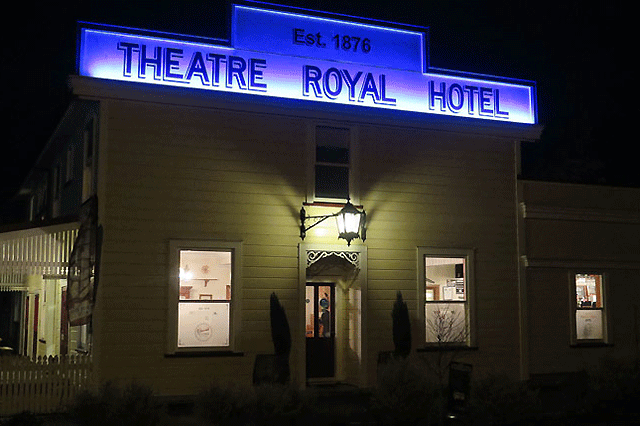
The Old Bank boasts two Victorian style suites, the ravishing Seddon Suite and Queen Victoria Suite, where the attention to detail to the period furnishings is beyond breath-taking. Vanessa pointed out that Kumara is fortified by a very strong community spirit amongst its 400 residents.
Every Monday, the hotel brings out its best china for a weekly morning tea for the seniors of Kumara, which is such a lovely touch. You’ll enjoy a heady dose of Kumara’s community spirit in the bar and dining area every night, which spills forth with vintage West Coast conviviality and their trademark laconic humour.
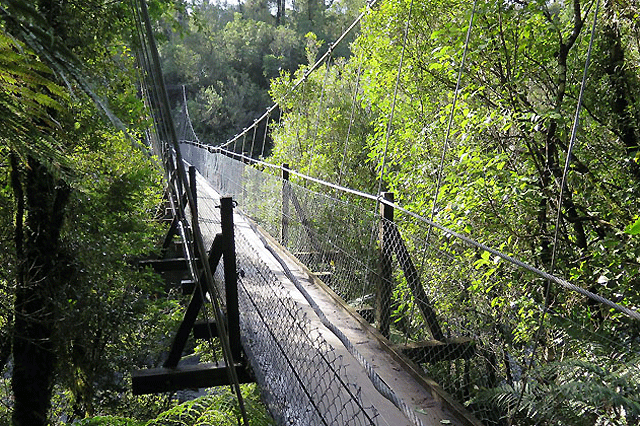
Dining here is a delight, with a very reasonable-priced menu. I feasted on fresh turbot in beer batter, while for dessert, don’t go past the apple crumble and custard. 140 years on since the Theatre Royal Hotel first opened, this venerable beacon of hospitality powers on. Unsurprisingly, the hotel is repeatedly showered with awards. You must experience it. www.theatreroyalhotel.co.nz


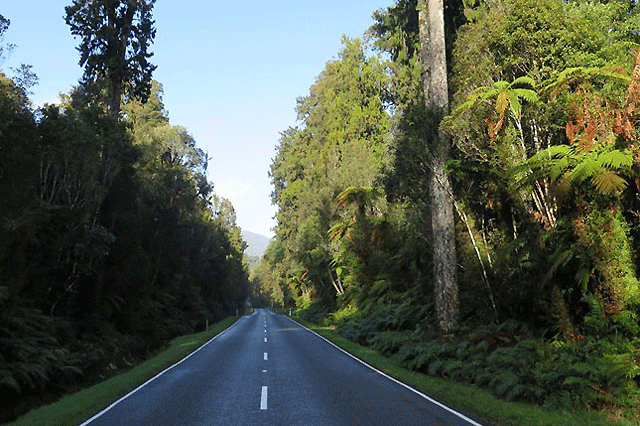

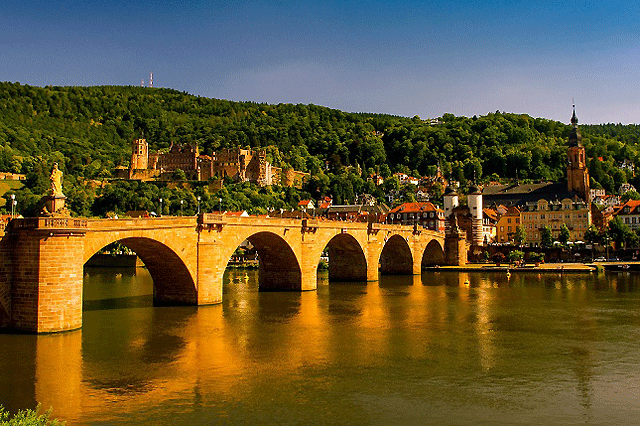
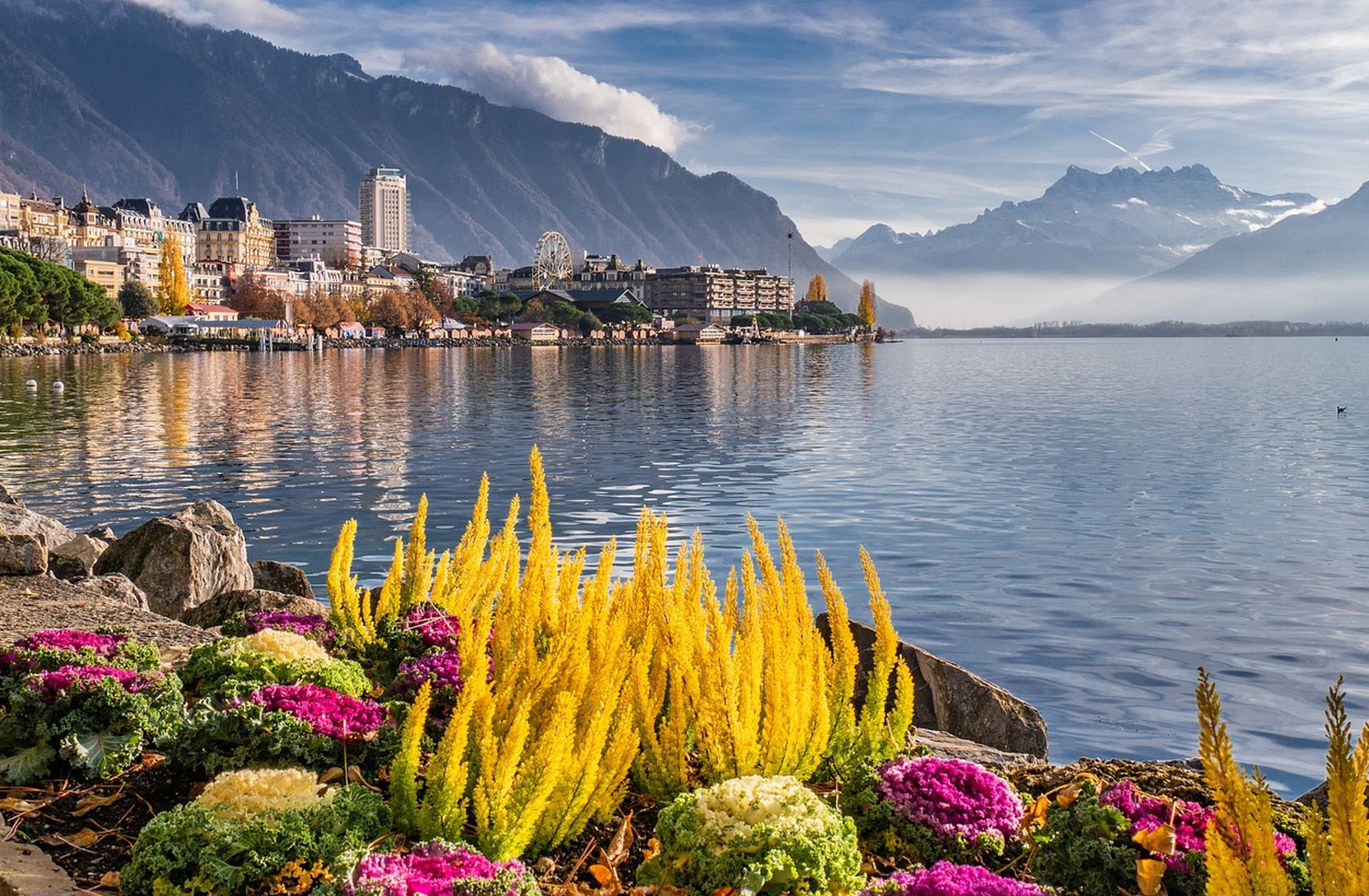

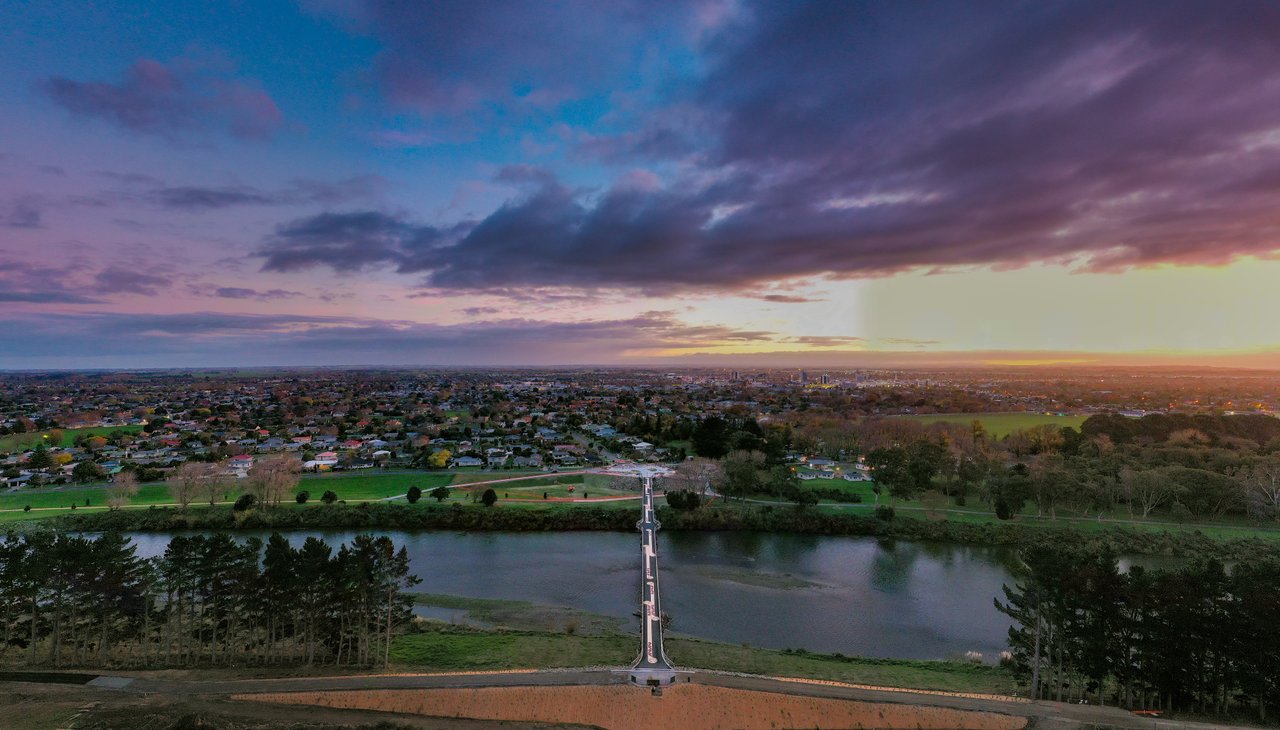
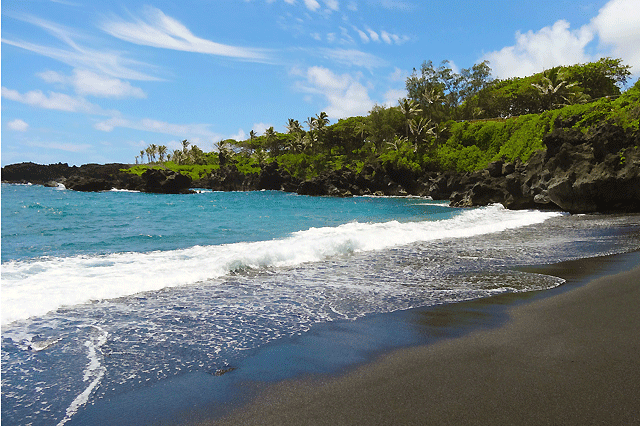


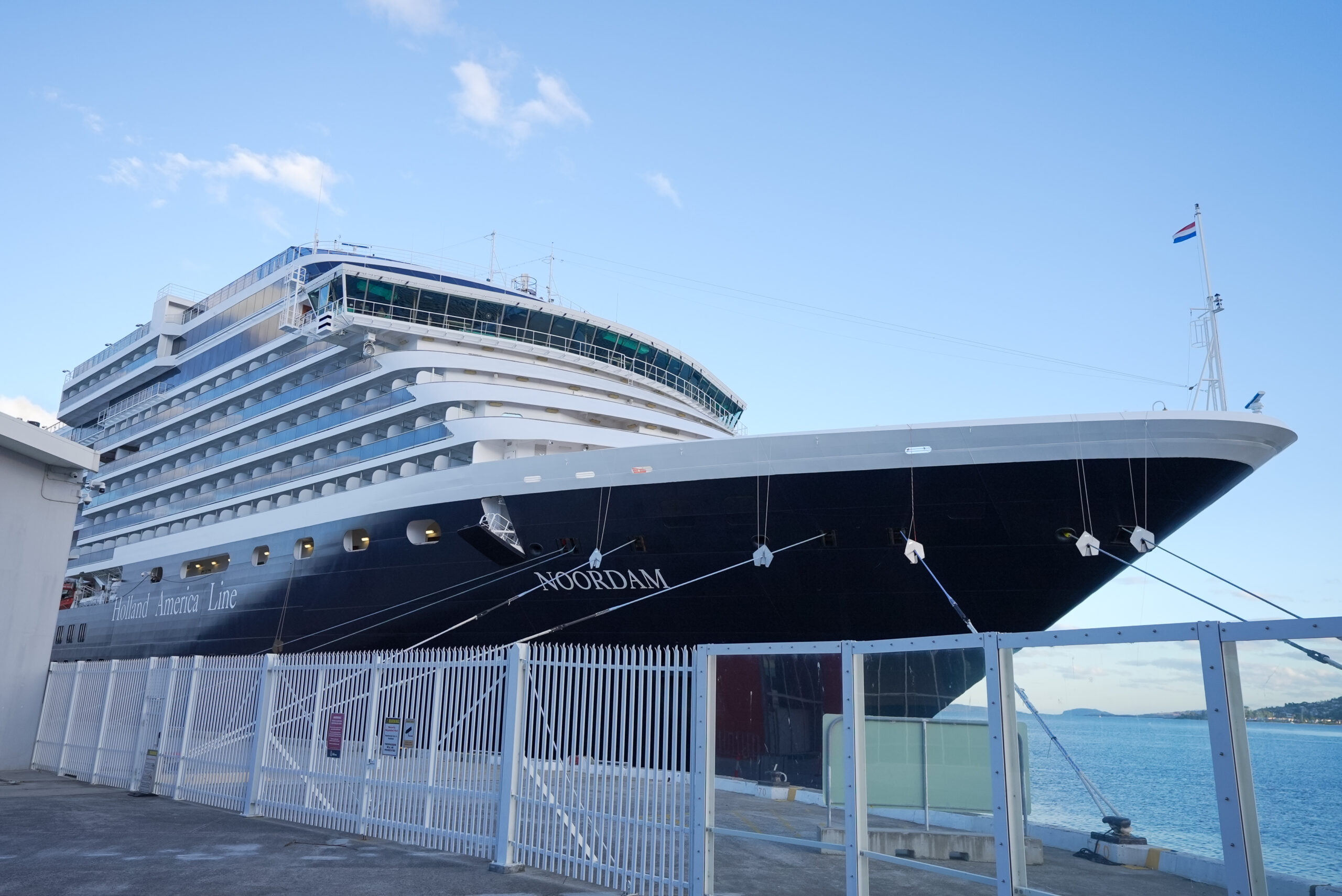
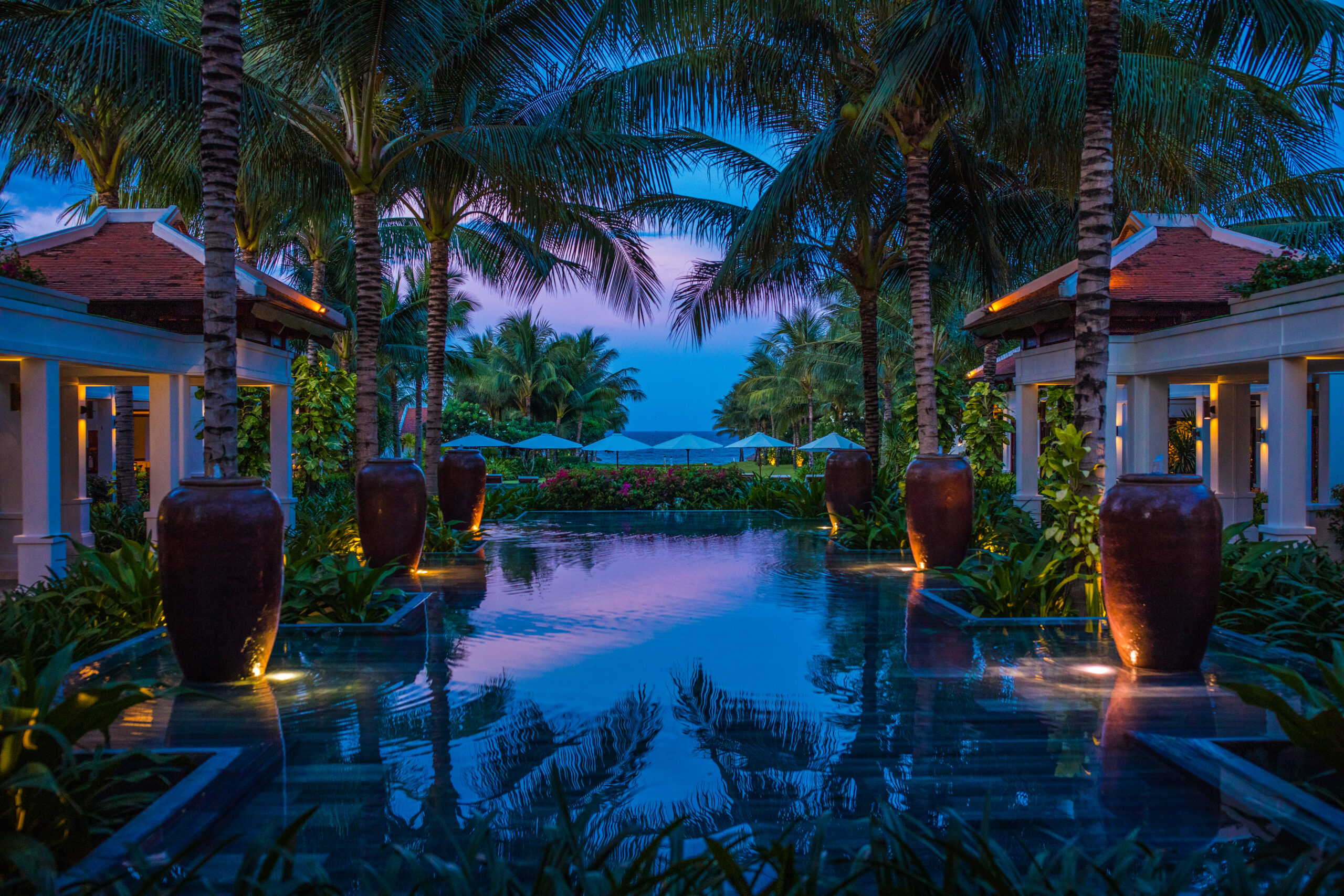
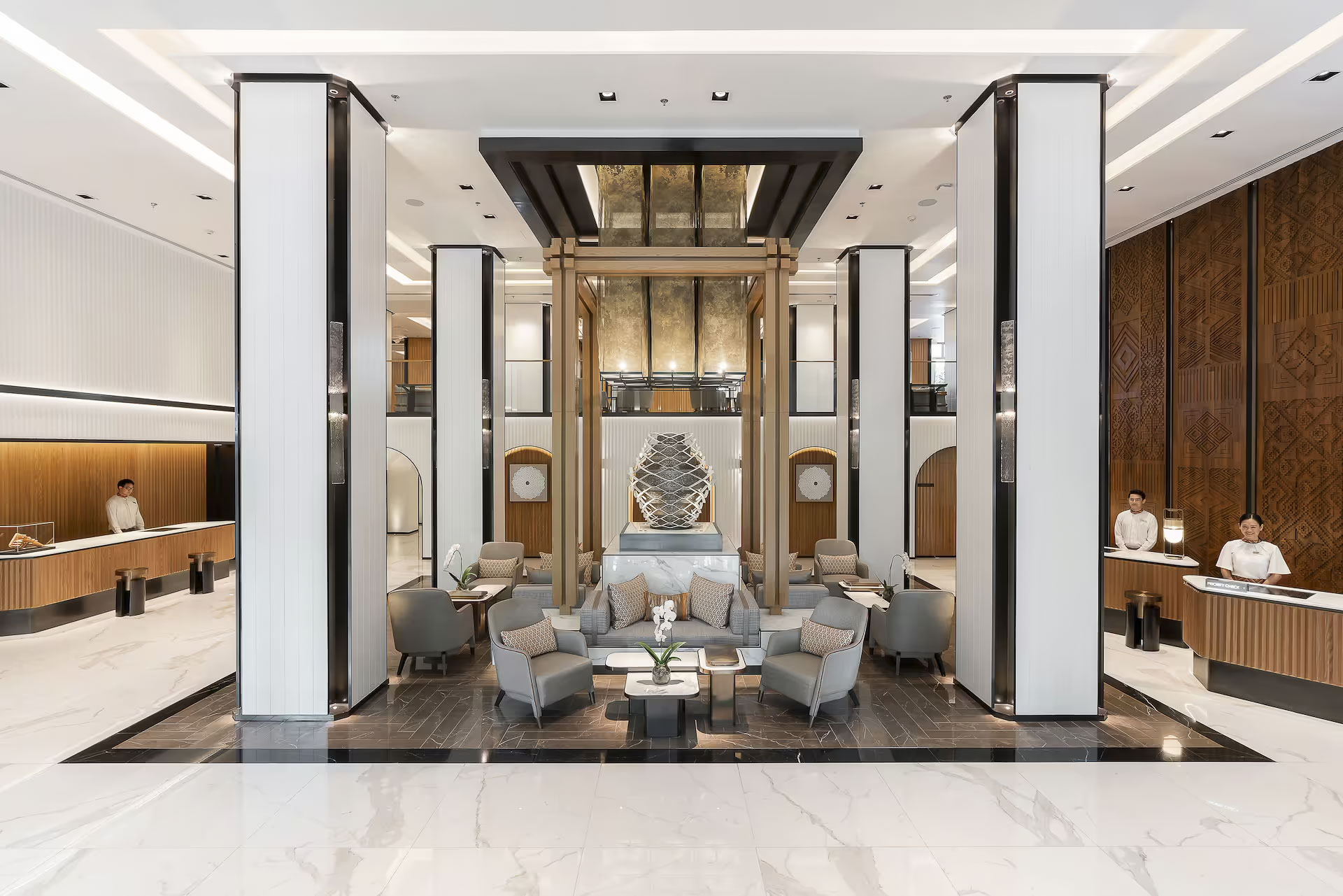
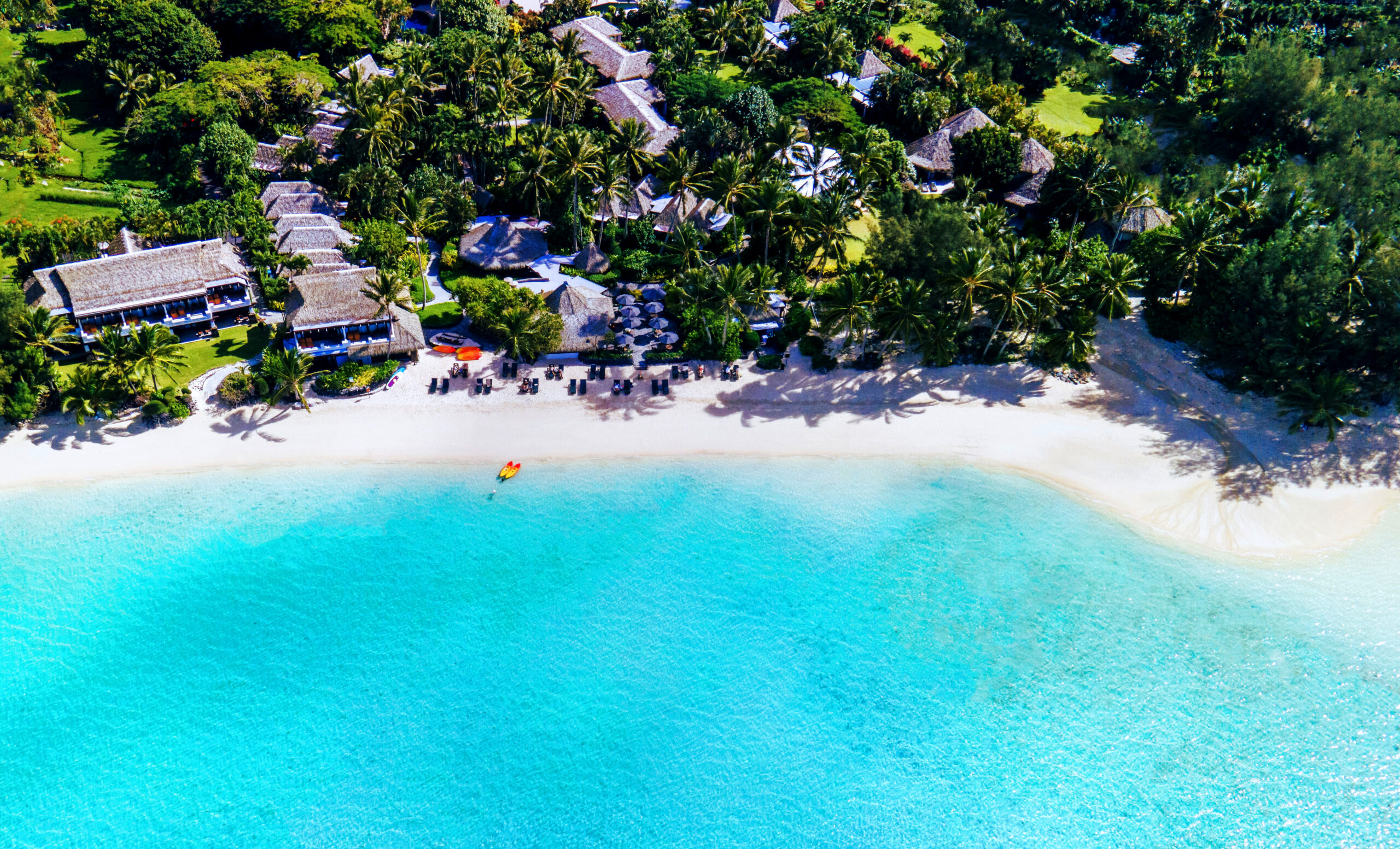
Recent Comments